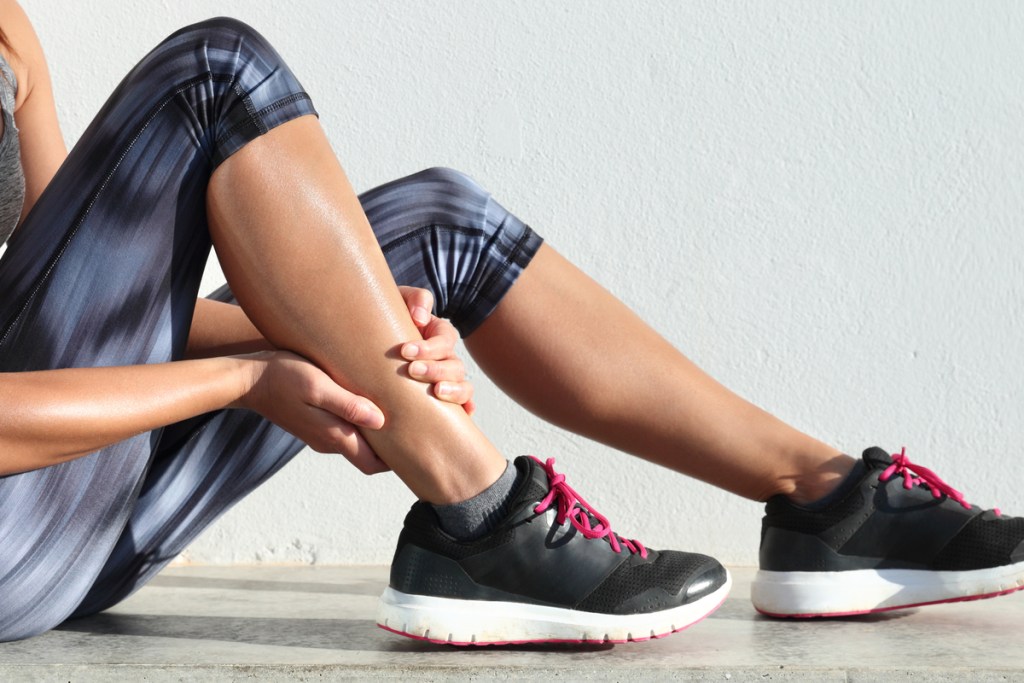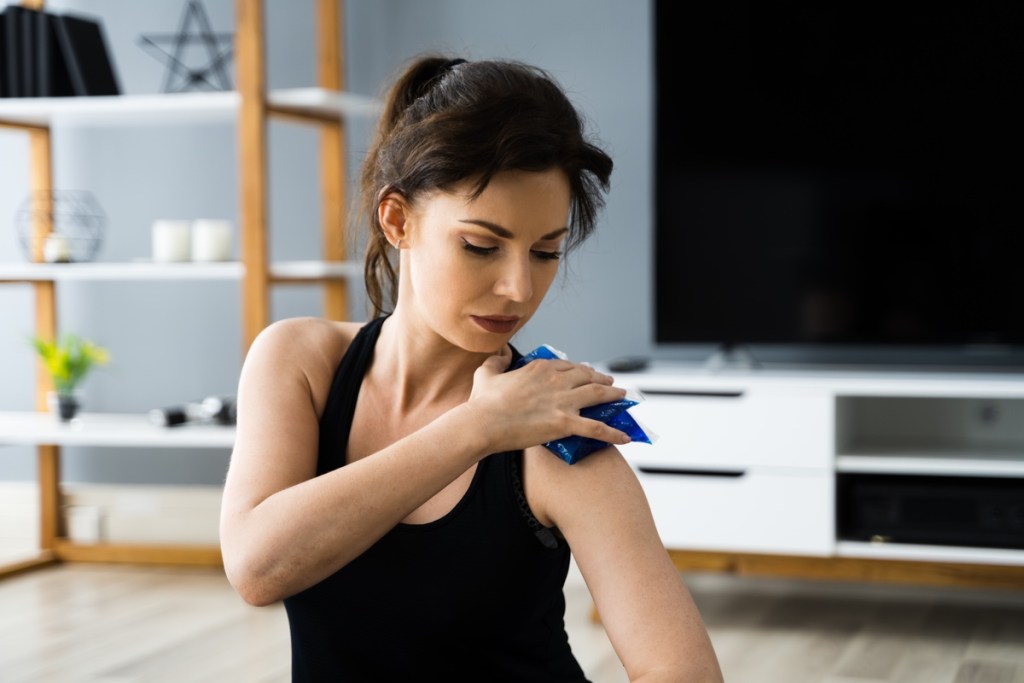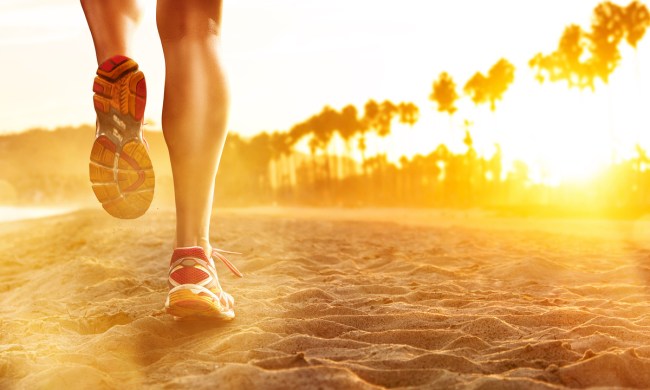
Young and old, experienced or beginner: anyone who’s ever exercised knows that aches and pains are part of the process.
But not all aches and pains are created equal. There’s garden-variety muscle soreness, and then there’s an injury. The first one goes away on its own, while the other, well, not so much.
It goes without saying that it’s important to be able to tell the difference between a real injury and uncomfortable but ultimately harmless soreness.
But how exactly does one do that?
Here are some ways to tell whether you’ve actually injured yourself during a workout.

Swelling and bruising explained
Standard-issue muscle soreness will never cause swelling. If you see something swelling, that’s a sure-fire way to tell that there is more at work here.
In an exercise context, swelling can be a sign of several things. It can be a simple bump or bruise, it could be a sign of overuse, or it could be a sign of a more serious injury.
To treat swelling, put an ice pack on the affected area for 10-20 minutes, then remove for about the same amount of time and repeat. Over-the-counter medications like ibuprofen (Advil) or naproxen sodium (Aleve) also can help with pain and inflammation.
You’ll also want to rest the area as much as possible. If it’s a simple case of bruising or overuse, the swelling, pain, and discomfort should subside in about three days. If it lasts longer than that, consider contacting your health care professional, as it may mean an injury has occurred.
What kind of pain is it?
Muscle soreness is just that: soreness. It’s sort of a dull, burning, aching sensation that tends to spread across a wide part of the body, rather than being concentrated in one very specific spot.
With injuries, it’s the opposite. Sharp, sudden, or stabbing pain at one point within the body can often feel deeper or more “mechanical” than that caused by general muscle soreness. If this describes the pain you’re feeling, you may be injured.
How long does it last?
While the aforementioned pain associated with non-serious bumps and bruises can last about three days, muscle soreness usually dissipates even more quickly: in about 24-48 hours (though it can last a bit longer at times).
With soreness, the pain should lessen significantly with rest. However, no need to wait until it’s completely gone to get back out on the trail or in the gym. In fact, exercising can help flush lactic acid — the culprit behind the soreness — out of your muscles by getting them warm and moving again. Walking or a light jog can sometimes be enough to help your body get back on track.
If it’s been a few days and time and exercise aren’t helping, it may be time to contact a health care provider. The soreness also can sometimes mask an actual injury, so be sure to pay attention to any changes in the nature or location of the pain as the days go by.
Bottom line
As always, if there’s ever any question about your health, go to see your health care professional. There’s no need to leave it to chance. Stop exercising until you get it figured out and your health care provider clears you to do so. Although we’re all conditioned to tough it out when it comes to exercise, sometimes the best thing to do is nothing at all. So if you think you may be injured, be prepared to take it easy for a while and don’t beat yourself up. After all, rushing back too early from an injury is a pretty good way to potentially make things worse.
BlissMark provides information regarding health, wellness, and beauty. The information within this article is not intended to be medical advice. Before starting any diet or exercise routine, consult your physician. If you don’t have a primary care physician, the United States Health & Human Services department has a free online tool that can help you locate a clinic in your area. We are not medical professionals, have not verified or vetted any programs, and in no way intend our content to be anything more than informative and inspiring.




